Jews in Wonderland
Jews in Wonderland
John M. Efron
John M. Efron is the Koret Professor of Jewish History at the University of California-Berkeley and author of German Jewry and the Allure of the Sephardic (Princeton University Press, 2016). This is his first contribution to the Seforim Blog.
Although an important sesquicentennial anniversary took place on September 5, 2016, few people outside of Berlin, and not even that many there will have paid much attention to it. As generally happens with selective historical amnesia that which was once world famous is now known by very few. On that very date one hundred and fifty years ago in 1866, Berlin’s Neue Synagogue on the Oranienburger Strasse, which was the largest and most ornate synagogue in the world was inaugurated in the presence of thousands, including scores of dignitaries, royals, as well as political and military figures, including the future Chancellor of Germany, Otto von Bismarck, General Field Marshal of the Prussian Army, Friedrich von Wrangel, Mayor of Berlin, Karl Theodor Seydel, Chief of the Berlin Police, Otto von Bernuth, and the Prussian Finance Minister, August von der Heydt.
The spectacular ceremony began at noon on that early autumn day with a procession down the massive central aisle of the synagogue. Under the musical directorship of the great, liturgical composer Louis Lewandowski, the choir of men and boys sang Psalm 118 to the accompaniment of an organ and a chorus of trombonists: “In the Lord do I glory. Let the lowly hear and rejoice.” According to one attendee, the rabbi, Dr. Joseph Aub, delivered a soaring sermon in which he expressed his wish that “the humanistic and tolerant spirit of the age” would carry on far into the future. The inauguration concluded with the afternoon Mincha service and befitting a synagogue that would become renowned for its musical traditions, Psalm 150 rang out: “Hallelujah. Praise God in His holy place, praise Him in the vault of His power. Praise Him for His mighty acts, praise Him as befits His abounding greatness. Praise Him with the ram-horn’s blast, praise Him with the lute and the lyre.” It was an unforgettable day for all in attendance.
Nowadays, and it is understandable, if anything is known and remembered about synagogues in Germany, it pertains to their destruction on the Kristallnacht of November 9, 1938. Where Kristallnacht signaled and symbolized the end of Jewish life in Germany, the inauguration of the many new synagogues that were built across the country in the nineteenth century symbolized the optimistic future that Rabbi Aub and the rest of German Jewry saw ahead. Of course, synagogues symbolize more than a future full of possibilities. They also tell stories about the way a particular congregation sees itself, the way it wants to be seen, and what its relationship is to Jewish history. While the neo-Moorish, Neue Synagoge stood out for its size and splendor, it was not the only one of its kind nor is its story simply a part of the history of synagogue architecture. Rather, it is but one part of a still larger and peculiar story of German-Jewish culture and its profound attraction to all things Sephardic.
The modern history of German Jewry begins in the eighteenth century, for it is then that we first see signs of a new and distinctive sense of self, one predicated on that community’s definitive, sometimes aggressive, separation from Polish Jewry, with whom it had previously formed a pan-Ashkenazic civilization. The process began with the abandoning of Yiddish and the adoption of German language and culture. This was followed in the nineteenth century by the advent of new forms of Judaism, such as Reform, Positive-Historical (later called Conservative in the United States), and modern Orthodoxy, the turn to Jewish scholarship, the acquisition of university education, and the emergence of Jews into the middle classes. All of these innovations intended to or served to change the image and appearance of Jews and Judaism.
One aspect of the great cultural transformation of German Jewry was the special place of honor it accorded medieval Spanish Jewry during its so-called Golden Age. For the entire German-Jewish elite, the Sephardim were a cultural nobility and over the span of about 120 years, from approximately 1780 to 1900, what first began among community leaders as an appreciation of Sephardic Jewry blossomed into a rhapsodic and full-blown infatuation with the Jews of Sepharad. In fact, the adulation shown towards Sephardic culture had a deep impact on German-Jewish self-perception, for the celebration of Sephardic Jewry led simultaneously to a self-critique, often a very harsh one, of Ashkenazic culture. German-Jewish elites portrayed the Jews of Germany and Poland as insular, unattractive and primitive and in response, they felt that the time had come to rectify this and become like they imagined the Jews of Spain to have once been—worldly, alluring, and cosmopolitan.
Beginning in the eighteenth century, with increasing fraternization between upper-class Jews and Christians and exposure to bourgeois tastes and sensibilities, Jews, long considered to be in religious error came to believe that they were also in aesthetic error. In almost all corporeal and cultural categories, Jews found themselves to be deficient, occasioning among them a crisis of aesthetic confidence. It was at this point that appearances first began to matter to German Jews, a situation that made them hyper self-conscious and hyper-vigilant, acutely aware of how they sounded, how they looked, and how they carried themselves. These were among the most important categories that drew them to the Sephardim, who they imagined as dignified, elegant, eloquent, and beautiful. To be sure, German Jews did not want to mimic Sephardic culture; they only wanted to be German Jews but they did wish to emulate the Jews of Spain and be thought of
in similar terms. In 1820, a young Prussian-Jewish lawyer named Eduard Gans applied to the government for permission to establish an association dedicated to the study of Jewish history and culture. In his application Gans invoked the Jews of Spain:
in similar terms. In 1820, a young Prussian-Jewish lawyer named Eduard Gans applied to the government for permission to establish an association dedicated to the study of Jewish history and culture. In his application Gans invoked the Jews of Spain:
“These [Spanish] Jews, resembling all others both physically and mentally but granted by the Arabs equality with Muslims, proceeded to plumb in concert all the known sciences of the day….And they employed [in their writings] not Hebrew but Arabic. Indeed those Jews expelled from [Spain] to France, Holland, Italy, and England, to the detriment of Spanish economic life…have never formed the contrast to Christian society which was so striking in the other family of Jews, [the Ashkenazim, who were] kept intentionally apart. They are marked by less discrepancy in morality, purer speech, greater order in the synagogue, and in fact better taste.” [1]
By using this example, Gans was suggesting that if Jews in his day were granted equality with Germans then Jewish morality, speech, decorum and taste would likewise improve.
The positive impression of Sephardic Jewry was cultivated in a variety of ways, all part of a new and developing German-Jewish culture. Maskilim or proponents of the Jewish Enlightenment claimed that Sephardic Hebrew was preferable to Ashkenazic pronunciation. Anthropologists asserted that the Sephardim were superior to Ashkenazim in terms of physical beauty and comportment while authors and poets wrote scores of wildly popular Sephardic-themed works, and historians penned highly romanticized depictions of Sephardic history. All of this created an image of the medieval Jews of the Iberian Peninsula as an ideal Jewish community, steeped both in Jewish tradition but also fully at home in secular culture. Jewish historians also believed that what made for Sephardic superiority was their living under tolerant Muslim rule and as such, nineteenth century German-Jewish historians were tireless promoters of the idea that there had been a Muslim-Jewish symbiosis. As the founding father of Reform Judaism, Abraham Geiger declared, “Judaism had developed its own fullest potential in
closest union with Arab civilization.”
closest union with Arab civilization.”
There was, however, one aspect of Sephardicism that stands out from all the rest because it was neither textual nor was it an exhortation to modify behavior; it was architecture. Between the 1830s and 1860s, the advent of neo-Moorish synagogues, with their towering minarets, giant domes, polychrome exteriors, windows with Islamic-style arches, and stunningly ornate interiors were the most visible, indeed, the most spectacular manifestation of an imagined Sephardic aesthetic and the only one that was created in partnership with non-Jews, in other words, the architects, builders, city planners and councils who approved such structures.
While there are neo-Moorish synagogues all over the world, what makes Germany the most important site for this architectural style is that it was the first place such synagogues were built and secondly, they were the only Orientalized buildings in Germany, a style almost all architects dismissed as suitable only for entertainment and recreational purposes. Indeed, where Orientalist buildings did exist—Holland, England, and France—most of these were found in parks, gardens, and holiday resorts. In Germany, however, the only Orientalized buildings were neo-Moorish synagogues and as such, it was accorded the status of a Jewish national style of architecture.
The neo-Moorish style did not simply appear but rather it evolved. The earliest such synagogues were erected in the provinces, with the first one opening in 1832 in the small town of Ingenheim. Designed by Friedrich von Gärtner, the Bavarian court architect, the small synagogue had no neo-Islamic decorations on the interior although it did employ an Egyptian theme for the Torah ark and had an aedicule bedecked with a frieze of palm trees, a botanical feature strikingly out of place in this rural Bavarian landscape. However, from the outside,
the oriental character of the building was unmistakable given the large horseshoe-arched entrance and Islamic style-windows that ran along either side of the synagogue and were modeled on those found on thirteenth and fourteenth century North African and Spanish mosques.
the oriental character of the building was unmistakable given the large horseshoe-arched entrance and Islamic style-windows that ran along either side of the synagogue and were modeled on those found on thirteenth and fourteenth century North African and Spanish mosques.
By the middle of the nineteenth century, however, these synagogues were no longer being built, out of consideration for both the high costs and shrinking regional communities, whose inhabitants were leaving rural areas and moving to big cities. This did not mean the end of neo-Moorish synagogues, however, for they now began to appear in large cities and in ever increasingly spectacular forms. In Dresden, the exterior of the Neue Synagoge built in 1840 was composed of an eclectic mix of Christian, Byzantine, and Romanesque elements with no neo-Moorish exterior elements. However, it was the first synagogue to have a neo-Moorish interior, borrowing decorative motifs from the Alhambra palace in Granada. The ceiling of the central dome was painted a brilliant blue with the sun’s while the walls were sumptuously painted in a dazzling array of colors, depicting floral and geometric designs. The Eternal Lamp, or ner tamid, that hung in front of the ark was of Moorish design and it is one of history’s puzzling ironies that upon learning of its beauty those two radical antisemites Richard and Cosima Wagner ordered a replica of the beautiful lamp for their house on Lake Lucerne. They used it for the first time when their son Siegfried was baptized at home in 1870.
The synagogue in Dresden was designed by one of Germany’s foremost architects, Gottfried Semper, the man who designed the city’s world famous opera house. His student, Otto Simonson, was one of the very few Jewish architects in Germany in the nineteenth century and his great contribution was to design what was Germany’s first fully neo-Moorish synagogue, both inside and out. Built in Leipzig in 1855, and also named the Neue Synagoge, its unusual triangular shape (akin to the Flatiron Building in New York) made it immediately recognizable. At the very point of this gigantic, 2,000 seat synagogue, where the two angles met, there was a massive, semicircular silo on top of which was a highly polished, fluted copper cupola, framed by a horseshoe arch, crowned with a Star of David.
On the synagogue’s interior, it was this silo that was home to the ark that held the Torah scrolls. The synagogue’s two massive facades were punctuated by four gigantic relief moldings of Islamic arches. Running along the top of the outer walls were crenellated parapets. With battlements, towers, and a rampart-like facade, the building took on the appearance of a fortress mosque. The interior was a blaze of color, with yellow skirting boards forming the base for green walls, which rose to meet a stunning blue ceiling bedecked with stars and a giant sun. All of this was further illuminated by the bright light that streamed in through the colored rose window. A monumentally large and highly decorated horseshoe arch framed the whole eastern end of the synagogue, further enhancing the neo-Moorish appearance of the whole structure. Simonson was one of the few architects to explain why he chose the neo-Moorish style for his synagogue:
“The Temple is built in the Moorish style, which appears to me to be the most
characteristic. Judaism adheres with unshakable reverence to its history; its
laws, its customs and practices, the organization of its ritual; in short, its
entire essence lives in its reminiscences of its motherland, the Orient. It is
those reminiscences that the architect must accommodate should he wish to
impress upon the building a typical [Jewish] stamp.”[2]
characteristic. Judaism adheres with unshakable reverence to its history; its
laws, its customs and practices, the organization of its ritual; in short, its
entire essence lives in its reminiscences of its motherland, the Orient. It is
those reminiscences that the architect must accommodate should he wish to
impress upon the building a typical [Jewish] stamp.”[2]
From humble rural beginnings, Germany’s neo-Moorish synagogues got increasingly bigger and ever more ornate and none was grander than the Neue Synagoge in Berlin, built between 1859 and 1866. When it finally received permission to build a new synagogue, the congregation announced an international competition to choose an architect for what it envisioned would be a brightly lit synagogue with seating for 3,200 congregants, upstairs galleries for the women, entrances separated according to sex, sufficient space for a 60-person choir, an apartment for the rabbi, as well as administrative offices and classrooms. There was also to be a library with space enough for 67,000 volumes. The renowned Eduard Knoblauch was the architect who won the tender and he had the difficult job of making sure that “the total cost was not to exceed 125,000 taler.”
Sadly, Knoblauch did not live to see his great creation, passing away in 1865. When the synagogue on the Oranienburger Strasse—the very street on which Knoblauch lived—was inaugurated on September 5, 1866, the guests were seated in the grandest neo-Moorish synagogue ever built. They were also in the most expensive, costs having ballooned to a staggering 750,000 taler. The synagogue’s external centerpiece was an onion dome that soared majestically some one hundred and sixty feet into the air. Wrapped in a blanket of zinc and swaddled in gold ribbing, crowned with a Star of David, the great dome was the brightest and most joyful architectural feature to be found anywhere in Berlin. It was also the tallest structure in the city. The central portal was flanked by towering minarets that borrowed heavily from North African mosques and from the Giralda, a late twelfth century minaret in Seville while the crenellations were typical of those found on Cairene mosques.
The synagogue was as massive as it was ornate, its triple-nave 188 feet long and 126 feet wide while the ceiling soared to a height of 87 feet. The interior was a dazzling kaleidoscope of color, light, and texture. With Moorish decorative patterns from the thirteenth and fourteenth centuries, the floors were inlaid with intricate mosaics; the walls were covered in richly colored stucco and then painted with stars and flora, while stalactite features hung from the ceiling where geometric and honeycomb patterns were also widely deployed, including on the elaborate friezes that accented the temple’s interior. A technical breakthrough helped bathe the entire synagogue in a palette of many colors. The windows were double paned, with the outer layer made of clear glass and the inner windows of stained glass. An innovative system of gas lamps was installed in between the two panes throughout the synagogue. While the myriad windows allowed for abundant light to pour into the synagogue, the placement of the gas lamps and the way they illuminated the stained glass helped create what one attendee at the synagogue’s dedication ceremony called a “magical effect.”
Indeed, the synagogue had the air and appearance of an Oriental pleasure palace. A contemporary newspaper account vividly described the synagogue as “a fairy-tale structure.…In the middle of a plain part of the city we are led into the fantastic wonder of the Alhambra, with graceful columns, sweeping arches, richly colored arabesques, abundant wood carvings, all with the thousandfold magic of the Moorish style.” The Neue Synagogue’s fame quickly spread and it attracted visitors from near and far. Among the curious was none other than the English author, Lewis Carroll, a man who knew a thing or two about wonderlands and fairy-tale structures. Just two years after publishing Alice in Wonderland, on Friday July 19, 1867, he stopped in Berlin on his way to Russia and while there, Carroll, a deeply devout Christian, made two visits to the synagogue. He noted in his diary that after a full day of sightseeing, “later in the evening we strolled out and looked at the Jewish Synagogue, said to be well worth the inspection.” His first cursory visit was followed by a much longer second stop the very next day and occasioned this beautiful diary entry:
“We began the day by visiting the Jewish Synagogue, where we found the service going on, and
remained until it was over. The scene was perfectly novel to me, & most
interesting. The building itself is most gorgeous, almost the whole interior
surface being gilt or otherwise decorated—the arches were nearly all
semi-circular, tho’ there were a few instances of the shape sketched here—the
east end was roofed with a circular dome, & contained a small dome on
pillars, under which was a cupboard (concealed by a curtain) which contained
the roll of the Law: in front of that again a small desk facing west—the latter
was only once used. The rest of the building was fitted up with open seats. We
followed the example of the congregation in keeping our hats on. Many men, on
reaching their places, produced white silk shawls out of embroidered bags,
& these they put on square fashion: the effect was most singular—the upper
edge of the shawl had what looked like gold embroidery, but was probably a
phylactery [sic].
These men went up from time to time & read portions of the lessons. What
was read was all in German, but there was a great deal chanted in Hebrew, to
beautiful music: some of the chants have come down from very early times,
perhaps as far back as David. The chief Rabbi chanted a great deal by himself,
without music. The congregation alternately stood & sat down: I did not
notice anyone kneeling.”[3]
remained until it was over. The scene was perfectly novel to me, & most
interesting. The building itself is most gorgeous, almost the whole interior
surface being gilt or otherwise decorated—the arches were nearly all
semi-circular, tho’ there were a few instances of the shape sketched here—the
east end was roofed with a circular dome, & contained a small dome on
pillars, under which was a cupboard (concealed by a curtain) which contained
the roll of the Law: in front of that again a small desk facing west—the latter
was only once used. The rest of the building was fitted up with open seats. We
followed the example of the congregation in keeping our hats on. Many men, on
reaching their places, produced white silk shawls out of embroidered bags,
& these they put on square fashion: the effect was most singular—the upper
edge of the shawl had what looked like gold embroidery, but was probably a
phylactery [sic].
These men went up from time to time & read portions of the lessons. What
was read was all in German, but there was a great deal chanted in Hebrew, to
beautiful music: some of the chants have come down from very early times,
perhaps as far back as David. The chief Rabbi chanted a great deal by himself,
without music. The congregation alternately stood & sat down: I did not
notice anyone kneeling.”[3]
For just over six decades the synagogue was home to a proud and confident congregation, one where the world’s first woman rabbi Regina Jonas preached and where in 1930 Albert Einstein conducted the orchestra for a concert performance. Alone among the synagogues mentioned above, the Neue Synagoge survived the Kristallnacht despite being damaged in that night of violence and desecration. In November 1943, however, it eventually succumbed, almost completely destroyed when struck by Allied bombers during the Battle of Berlin. After the war, the synagogue was, by dint of the Cold War, located in what became communist East Germany. In 1958 the main part of the building was demolished, with only those sections adjacent to the street remaining intact. After the fall of the wall in 1989, those parts of the building that had survived, which included the severely damaged dome and the beautiful facade, were renovated and the synagogue was reopened in 1995. However, what once was is no longer. The main sanctuary does not exist. Today, on the premises there is a museum, an archive, classrooms, the administrative offices of the Jewish community and a small synagogue that is used for regular services.
Why did Jews build in the neo-Moorish style, especially in an era when German Jewry fought tirelessly against an antisemitic image that considered them a foreign, Oriental people? Indeed, critics of the synagogue claimed that its design only confirmed this. I think that from the Jewish perspective, the neo-Moorish design linked these congregations to their image of the Sephardim, allowing the congregations to appear dignified and sensitive to the importance of aesthetics and good taste. However, above all, these mostly Reform temples looked nothing like any synagogues ever built before. And like Reform Judaism itself, they were utterly new, with no historical precedent and that was their appeal and their purpose.
Though none of the synagogues built in the neo-Moorish style bore any resemblance to synagogues that had existed in medieval Spain they were nonetheless just one element of a much larger cultural project undertaken by German Jews, wherein they sought to honor and emulate Sephardic Jewry as part of a transformative process that would see them form a new kind of Ashkenazic Jewish culture. Doing so led to a highly romanticized depiction of Sephardic Jewry, one where they were seen as superior to Ashkenazim in nearly every way—a curious, if not troubling, Ashkenazic assertion if there ever was one. Long after the tragic demise of Spanish Jewry, the rays of its so-called Golden Age continued to shine across the Jewish world but without doubt it was in modern Germany that those rays enjoyed their greatest luminosity.
Notes:
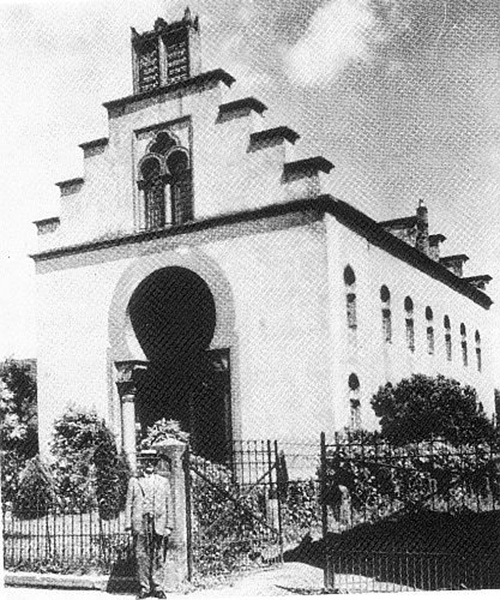
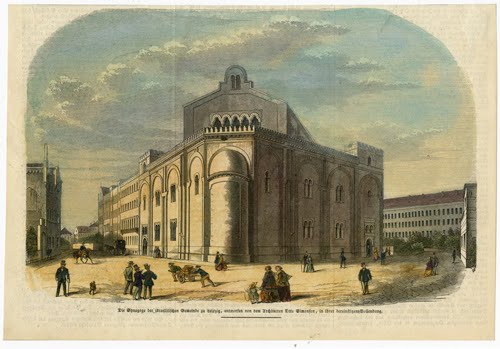
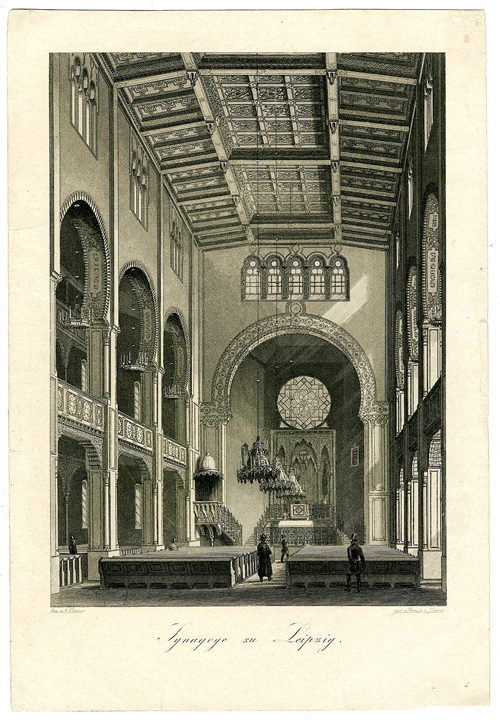
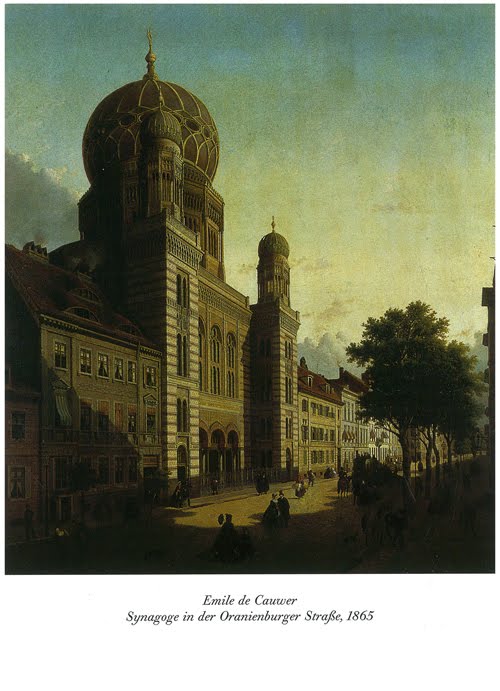
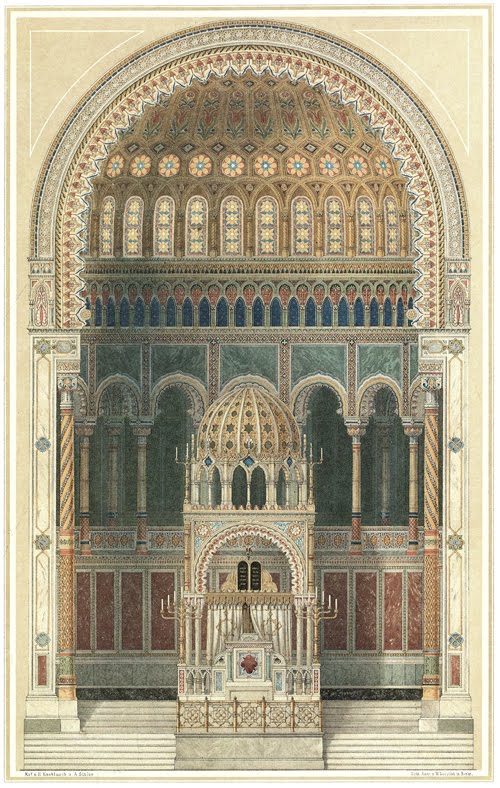
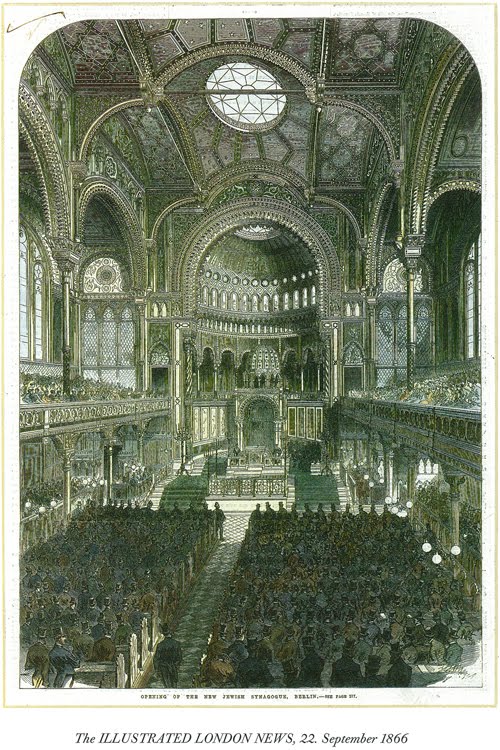



11 thoughts on “Jews in Wonderland”
I just want to say I’m very new to blogging and honestly enjoyed your web site. Almost certainly I’m planning to bookmark your website . You amazingly come with superb articles. Thank you for revealing your website page.
both basketball and football are sports that are very close to my heart. i love them both but football is my passion..
Really nice pattern and fantastic content , very little else we need : D.
hello https://www.wooricasinokorea.com 실시간바카라
I needed to thank you for this very good read!! I certainly enjoyed every bit of it. I’ve got you saved as a favorite to check out new things you post…
You’ve made some really good points there. I checked on the web for more info about the issue and found most people will go along with your views on this website.
Wonderful post! We will be linking to this great article on our website. Keep up the great writing.
Thanks for revealing your ideas. I’d personally also like to say that video games have been actually evolving. Modern technology and improvements have assisted create authentic and active games. These types of entertainment games were not as sensible when the actual concept was being attempted. Just like other kinds of technological innovation, video games also have had to grow through many years. This itself is testimony towards fast progression of video games.
Do you believe past life experiences? Do you think is reincarnation real?
Oh my goodness! Amazing article dude! Thank you, However I am having issues with your RSS. I don’t understand the reason why I am unable to subscribe to it. Is there anybody else getting the same RSS problems? Anybody who knows the answer can you kindly respond? Thanks.
I was able to find good info from your content.